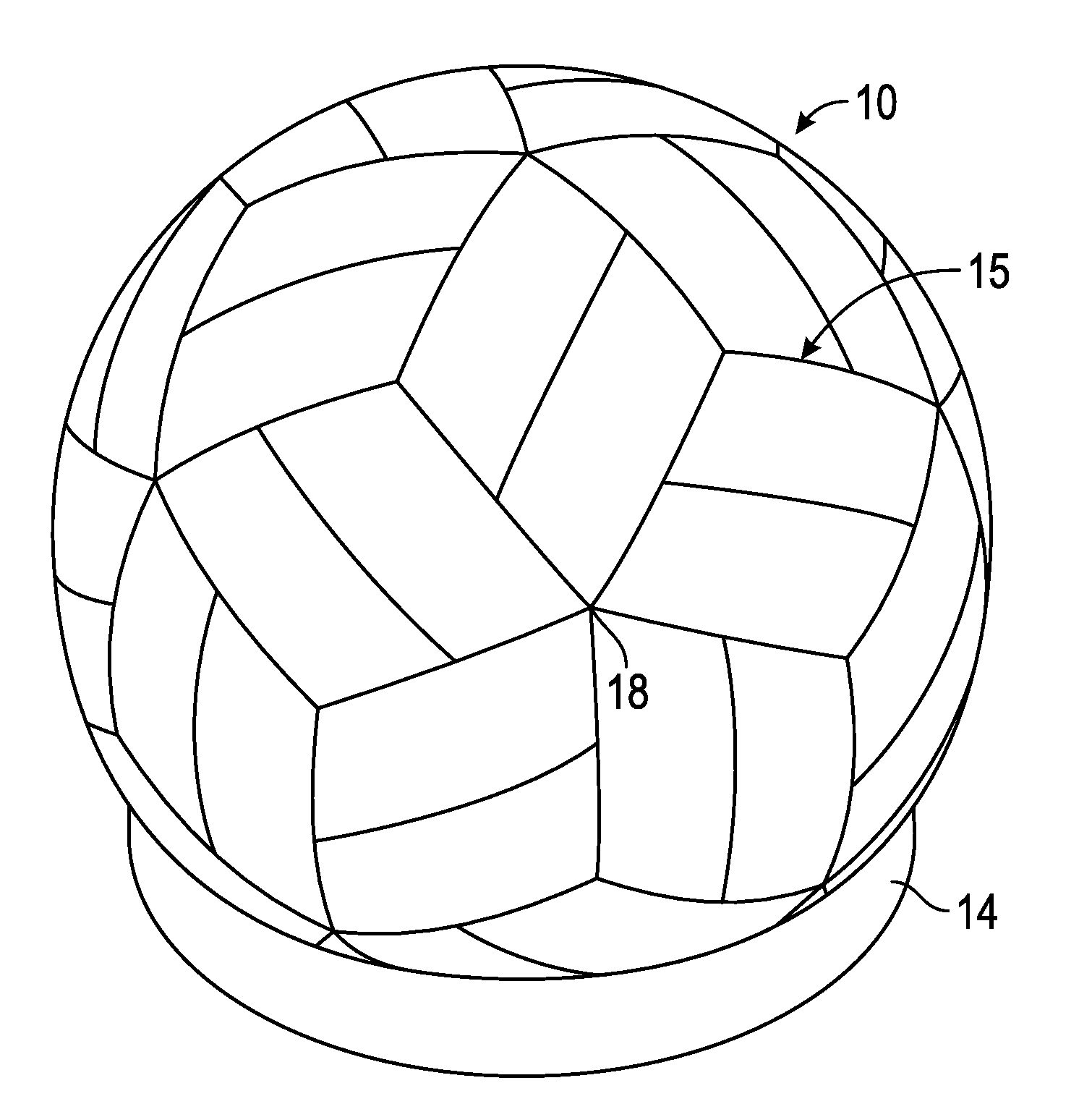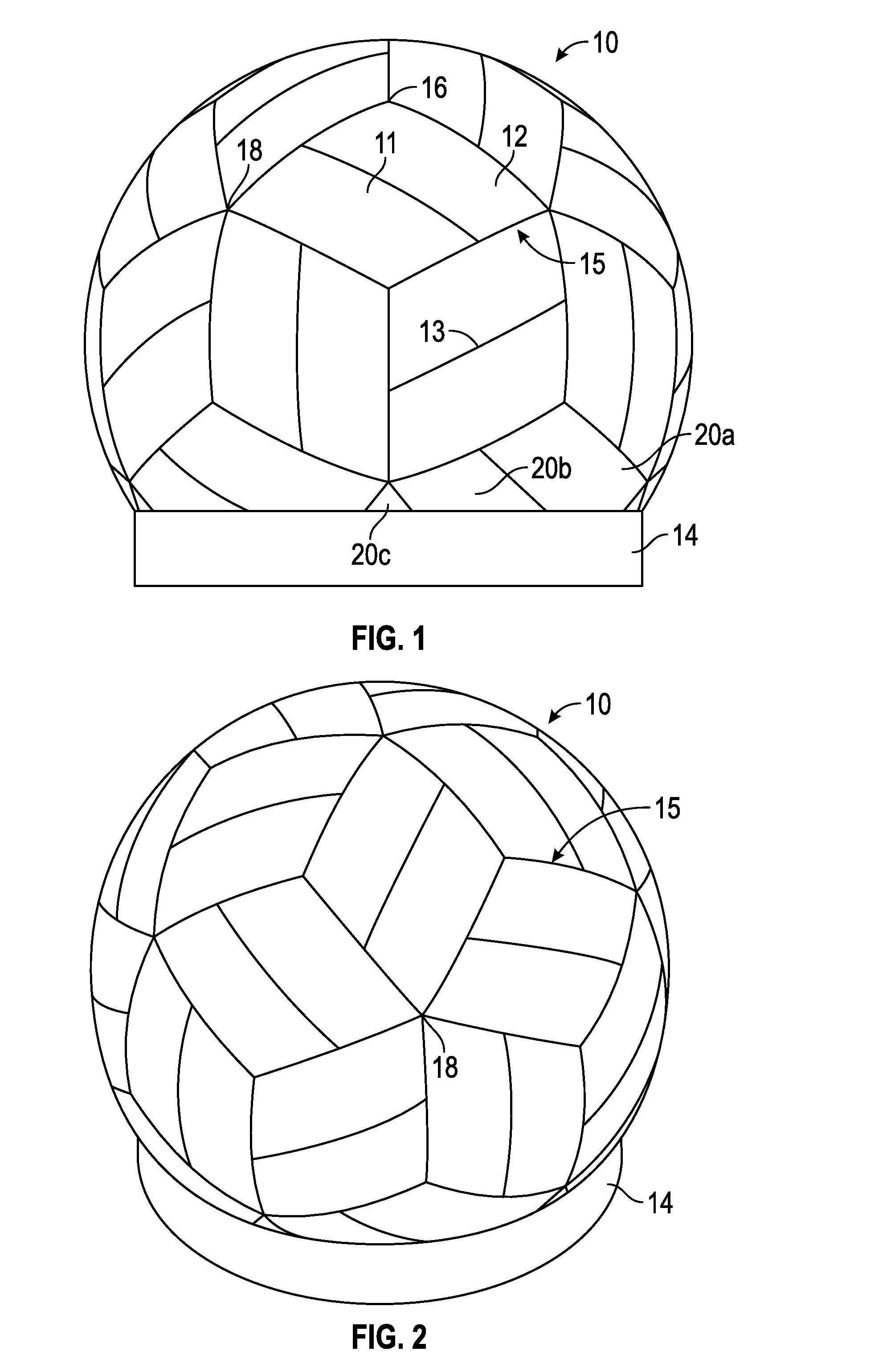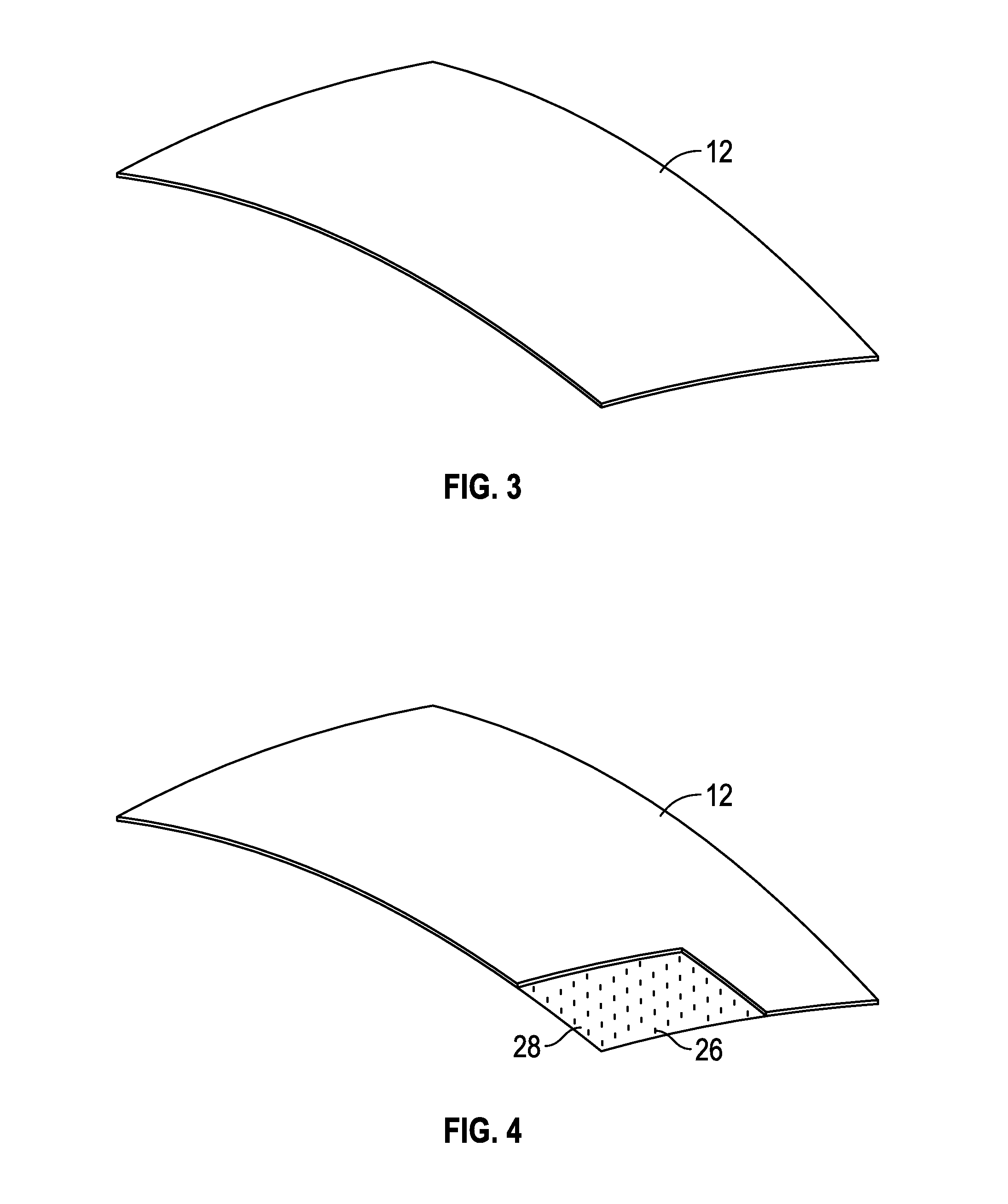Advanced composite radome and method of manufacturing
a technology of composite radomes and radomes, applied in the field of radomes, can solve the problems of affecting the transmission of radar, unable to allow the replacement of a single panel, etc., and achieve the effects of reducing water penetration, superior weathering and hydrophobic properties, and reducing the risk of uv exposur
- Summary
- Abstract
- Description
- Claims
- Application Information
AI Technical Summary
Benefits of technology
Problems solved by technology
Method used
Image
Examples
Embodiment Construction
[0030]With reference to FIGS. 1-11, an embodiment advanced composite radome will be described.
[0031]The family of radomes of interest are the A-Sandwich radomes that are radio frequency (“RF”) transparent, and are generally thinned skinned glass fiber reinforced composite sandwich structures with a foam core. The foam core is RF transparent and is defined as approximately ¼ the wavelength of the radar being covered and protected.
[0032]In FIG. 1, the radome 10 is shown in side elevation with a truncated base. For discussion purposes the specific configuration, diameter, wall thickness and details will be discussed, but, in alternative embodiments, these details and parameters can be changed.
[0033]FIG. 1 is a rhombic triacontahedron design, but clearly could be any of a variety of radome configurations in which panels are defined and connected into a perfect sphere. It turns out a rhombic triacontahedron of the configuration shown has in a full sphere 60 identical panels that when ass...
PUM
| Property | Measurement | Unit |
|---|---|---|
| thick | aaaaa | aaaaa |
| thick | aaaaa | aaaaa |
| diameter | aaaaa | aaaaa |
Abstract
Description
Claims
Application Information
 Login to View More
Login to View More - R&D
- Intellectual Property
- Life Sciences
- Materials
- Tech Scout
- Unparalleled Data Quality
- Higher Quality Content
- 60% Fewer Hallucinations
Browse by: Latest US Patents, China's latest patents, Technical Efficacy Thesaurus, Application Domain, Technology Topic, Popular Technical Reports.
© 2025 PatSnap. All rights reserved.Legal|Privacy policy|Modern Slavery Act Transparency Statement|Sitemap|About US| Contact US: help@patsnap.com



